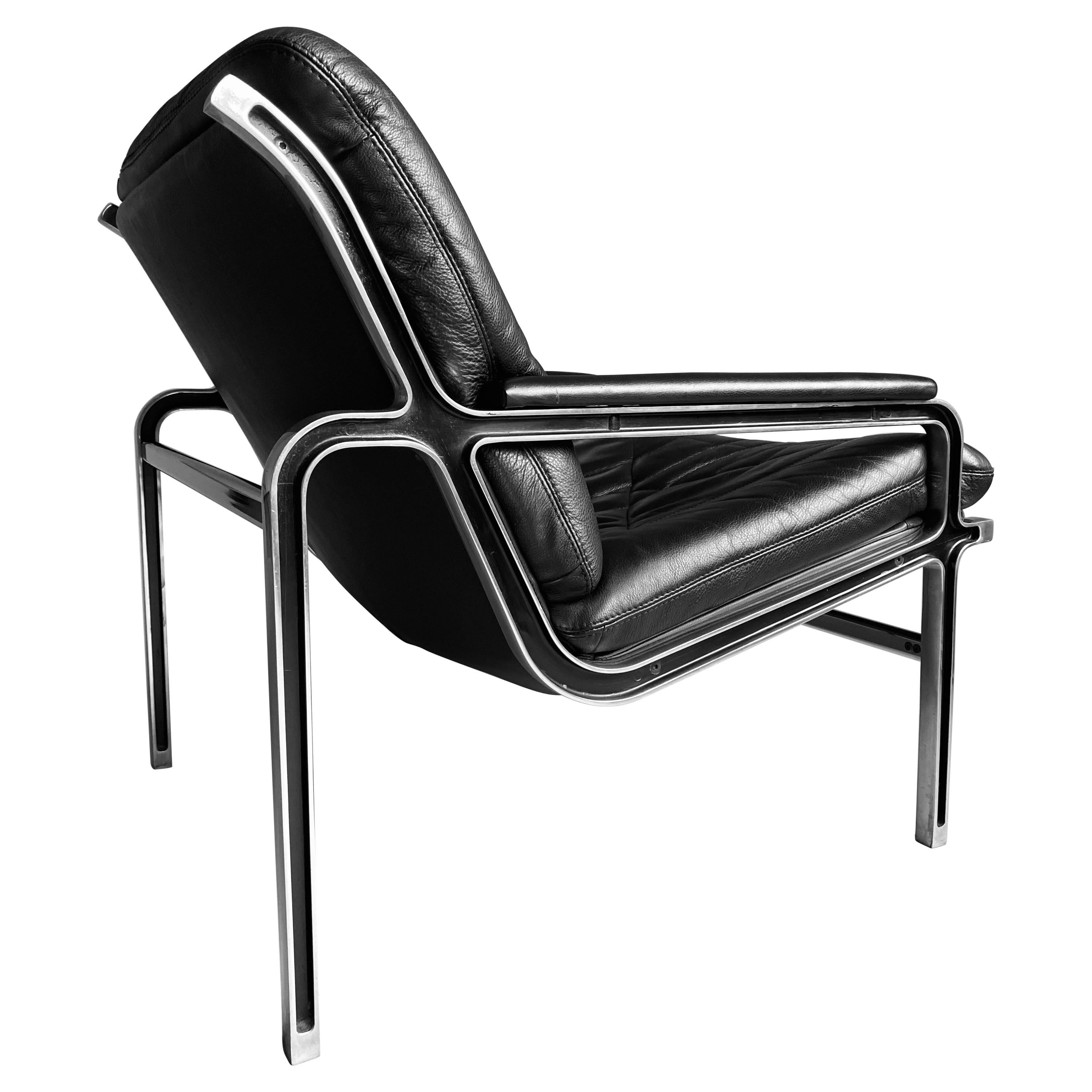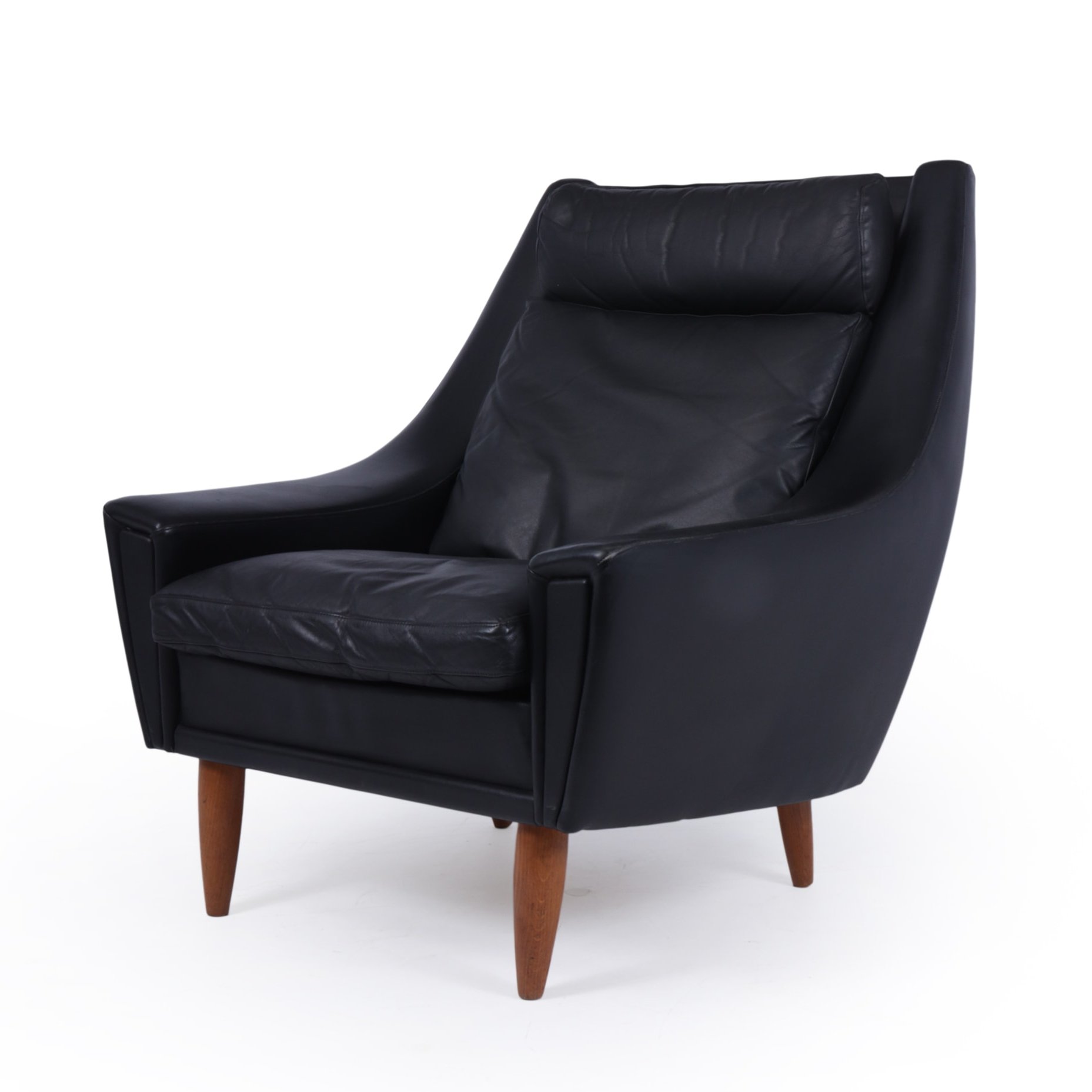Historical Context and Popularity: Black Leather Mid Century Chair

Right, so, mid-century modern, innit? Think post-war boom, the 50s and 60s, a whole vibe shift. People were knackered after the war, craving something fresh and optimistic – a break from all the stuffy Victorian stuff. This led to a design movement all about clean lines, functionality, and a bit of a minimalist edge. Think less clutter, more space to breathe. Black leather chairs totally fitted that vibe.
The popularity of black leather mid-century chairs? Well, it’s a proper timeless classic. The sleek design ages well, it’s comfy as anything, and that black leather just adds a touch of sophistication, right? It’s versatile too – goes with loads of different interior styles. Plus, they’re bloody durable, so they last ages. It’s like a solid investment, a proper statement piece.
Key Designers and Manufacturers
Loads of big names were involved in making these chairs. Think about the iconic Eames Lounge Chair and Ottoman – a total game-changer, designed by Charles and Ray Eames. Then there’s Paul McCobb, known for his super clean lines and use of simple materials. Many furniture companies jumped on the bandwagon, like Herman Miller and Knoll, churning out loads of these chairs. They became a symbol of good design and modern living. These companies weren’t just making chairs; they were crafting pieces of design history, you know? Think of the quality – these weren’t your cheap, mass-produced knock-offs; they were built to last, mate.
Iconic Interiors and Film Appearances
These chairs have popped up in loads of iconic places. Think Mad Men – the whole show is practically a mid-century modern museum, with those chairs adding to the sleek, sophisticated office vibe. They’re often used in films and TV shows to represent wealth, style, and a certain level of sophistication – like a visual shorthand for “this character is cool and successful”. You see them in stylish apartments, in offices, even in some retro diners, giving that space a certain je ne sais quoi. They’ve become a visual shorthand for a particular era and aesthetic, appearing in everything from period dramas to modern-day interiors, proving their enduring appeal. The chairs themselves become part of the story, adding to the overall feel. Proper cool.
Care, Maintenance, and Restoration

Right, so you’ve snagged yourself a proper vintage leather chair, proper lush, right? Keeping it looking boss is key, innit? We’re talking about preserving that mid-century vibe for years to come, so let’s get into the nitty-gritty of looking after your leather throne.
Leather Cleaning Methods and Product Comparison
Choosing the right cleaning method is mega important. Using the wrong stuff can totally wreck your chair, leaving it looking worse for wear. Here’s the lowdown on some popular options and their pros and cons:
- Leather Cleaners (Commercial): Loads of these are available, some specifically for leather. Check the label carefully – some are harsh and can damage the leather if not used correctly. Always test on a hidden area first, like underneath a cushion. Pros: Easy to use. Cons: Can be pricey, some can leave a residue, and might not be suitable for all leather types.
- Mild Soap and Water: A simple mix of lukewarm water and a tiny bit of mild soap (like saddle soap) can work wonders for a light clean. Gently wipe with a soft cloth, then buff dry. Pros: Cheap and cheerful, gentle on the leather. Cons: Might not be effective for stubborn stains.
- Leather Conditioner: This is your mate for keeping the leather supple and preventing cracking. Apply sparingly and buff in thoroughly. Pros: Keeps leather hydrated and looking fly. Cons: Can be a bit greasy if you overdo it.
Common Issues and Problems
Over time, even the flyest leather chairs can start showing their age. Cracking, fading, and structural damage are all common issues. Cracking usually happens because the leather dries out, while fading is often caused by sun exposure. Structural damage, like wobbly legs or loose joints, can happen from general wear and tear.
Restoring a Damaged Black Leather Mid-Century Chair, Black leather mid century chair
Let’s say your chair’s seen better days. Here’s a step-by-step guide to bringing it back to life:
- Assessment: First, check for any rips, tears, or major structural damage. This will dictate what you need to do.
- Cleaning: Give the chair a thorough clean using your chosen method (see above). Make sure it’s completely dry before moving on.
- Conditioning: Apply a good quality leather conditioner to keep the leather supple and prevent further cracking. Follow the product instructions carefully.
- Repairing Minor Damage: For small scratches or scuffs, you might be able to use a leather repair kit. These usually come with coloured fillers to match your chair.
- Structural Repairs: If there’s serious structural damage, you might need to call in a professional upholsterer. They’ll be able to sort out wobbly legs, loose joints, and other issues.
